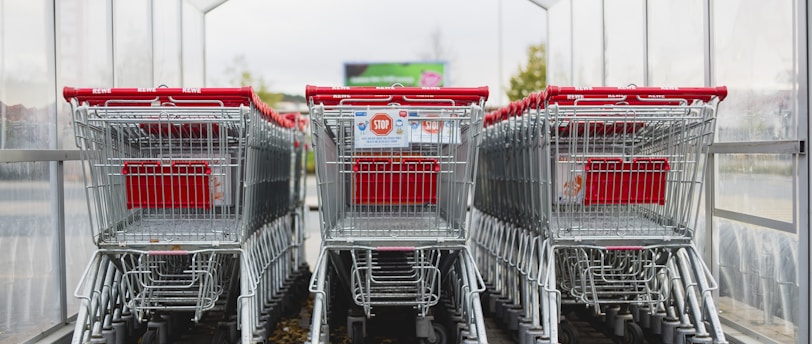Strategies for Dealing with Cart Abandonment in 2024
How to Re-engage Users Using Email as a Primary Channel
E-COMMERCE
Rostyslav
1/19/20243 min read


Introduction
In the rapidly evolving world of e-commerce, cart abandonment remains a significant challenge for businesses. According to recent statistics, the average cart abandonment rate stands at a staggering 69.57%. This means that nearly 70% of users who add items to their online shopping carts leave without completing the purchase.
However, all hope is not lost. With the right strategies in place, businesses can effectively tackle cart abandonment and re-engage users. In this blog post, we will explore the power of email as a primary channel for recovering abandoned carts in 2024. We will discuss various strategies that can be implemented to entice users back and ultimately boost conversion rates.
1. Personalized Cart Recovery Emails
One of the most effective ways to re-engage users who have abandoned their carts is through personalized cart recovery emails. These emails should be tailored to each individual user, addressing their specific needs and reminding them of the items they left behind.
Start by capturing the user's email address early in the shopping process. This allows you to send targeted emails even if the user abandons their cart without creating an account. Personalize the email by including the user's name, the items they left in their cart, and a clear call-to-action to complete the purchase. Offering a limited-time discount or free shipping can also be a powerful incentive to encourage users to return.
2. Abandoned Cart Follow-up Series
While a single cart recovery email can be effective, implementing an abandoned cart follow-up series can significantly improve your chances of re-engaging users. Instead of sending just one email, set up an automated series of emails that are triggered at specific intervals after the cart abandonment.
For example, you can start with a gentle reminder email within a few hours of the abandonment, followed by a more persuasive email a day or two later. The final email in the series can offer a special promotion or a time-limited discount to create a sense of urgency. By gradually increasing the incentives and urgency, you increase the likelihood of converting the user.
3. Dynamic Product Recommendations
Another powerful strategy to entice users back to their abandoned carts is by including dynamic product recommendations in your recovery emails. Utilize data from the user's browsing and purchase history to suggest related or complementary products to the items they left behind.
For example, if a user abandoned a pair of running shoes, you can include recommendations for matching socks, athletic wear, or even a fitness tracker. By showcasing relevant products, you not only remind users of what they initially wanted but also provide additional value and convenience.
4. Social Proof and Customer Reviews
When users abandon their carts, they may have doubts or concerns about the product or the overall shopping experience. Including social proof and customer reviews in your recovery emails can help alleviate these concerns and build trust.
Showcasing positive reviews, ratings, and testimonials from satisfied customers can provide reassurance to hesitant users. Consider including snippets of reviews that specifically mention the product the user left in their cart. This can serve as a gentle reminder of the product's quality and popularity.
5. Simplified Checkout Process
A complicated or lengthy checkout process can often be a contributing factor to cart abandonment. To combat this, ensure that your checkout process is streamlined and user-friendly.
Consider implementing features such as guest checkout, one-click purchasing, and saved payment information. By reducing the number of steps and eliminating unnecessary form fields, you can make the checkout process quick and hassle-free. Including progress indicators can also help users feel more confident about the remaining steps.
6. Retargeting Ads
In addition to email, retargeting ads can be a powerful tool for re-engaging users who have abandoned their carts. By placing targeted ads on various platforms, you can remind users of the items they left behind and entice them to return.
Retargeting ads can be highly personalized based on the user's browsing behavior and the specific items they abandoned. For example, if a user added a dress to their cart, you can display an ad showcasing the dress along with a limited-time discount code. This personalized approach can significantly increase the chances of conversion.
Conclusion
Cart abandonment is a prevalent challenge for e-commerce businesses, but with the right strategies, it can be effectively addressed. By utilizing email as a primary channel for re-engaging users, businesses can recover abandoned carts and boost conversion rates. Implement personalized cart recovery emails, automated follow-up series, dynamic product recommendations, social proof, simplified checkout processes, and retargeting ads to maximize your chances of success. Remember, each user is unique, so tailor your approach to their specific needs and preferences. By implementing these strategies in 2024, you can stay ahead of the competition and optimize your cart abandonment recovery efforts.
